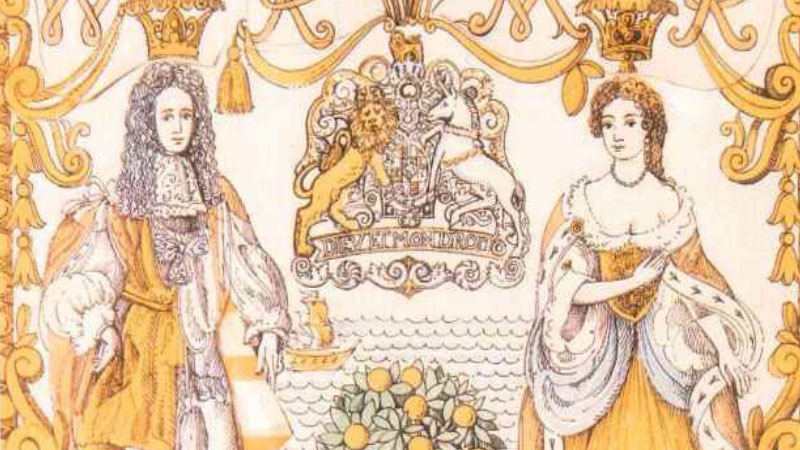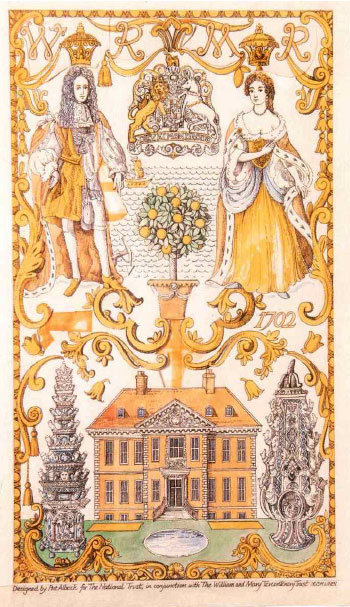
1989 marked the tercentenary of the ‘Glorious Revolution7. This was the phrase coined for the arrival of William of Orange as the husband of Queen Mary and King of England, and the final victory of Protestantism in the country. Bold swags and detailed tulip pots characterize the golden age of English Baroque.
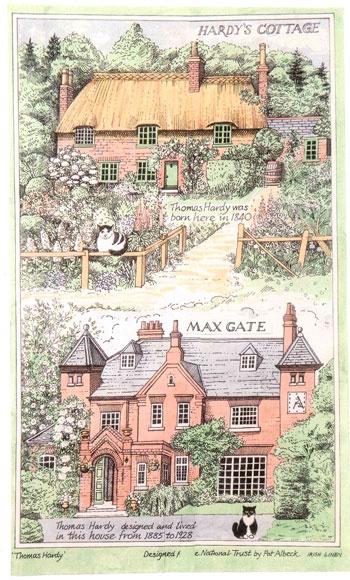
Pat loved Thomas Hardy. Powerfully romantic with a highly developed social conscience, he was one of her literary heroes. He was also important to her editor Ray Hallet – so a visit to Dorset with him was welcome. They went to look at the cottage where the author was born and Max Gate, the house he built himself nearby (he was originally an architect). These properties are typical of the kind that are not architecturally significant, but important because of their associations.
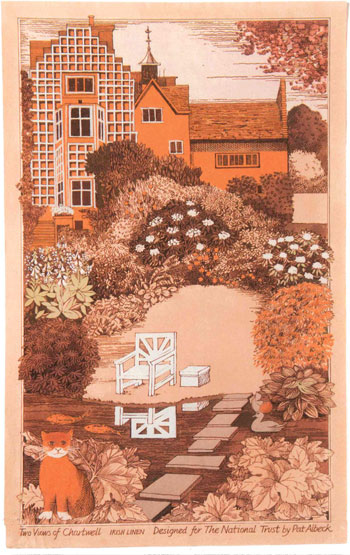
It was typical of Pats homage to the great wartime leader and his beloved home and retreat at Chartwell in Kent (where he so famously kennelled his black dog horrors with bricklaying and other garden projects) that she should put in pole position Churchills large ginger tomcat – the other colors in this design take their cue from the cat.
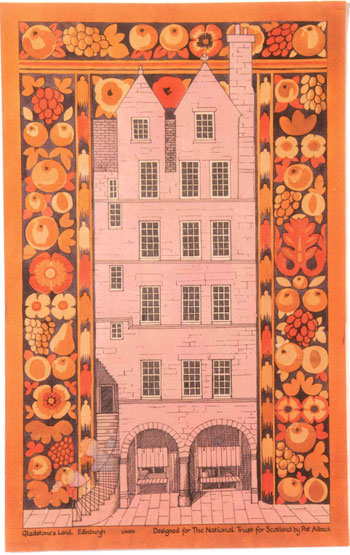
No matter how hard Pat tried to imitate the work of another artist – in this case, a seventeenth-century ceiling in Edinburgh – it always ended up looking intrinsically hers. Her most deliberate line and natural desire to order and control a pattern always came to the fore.
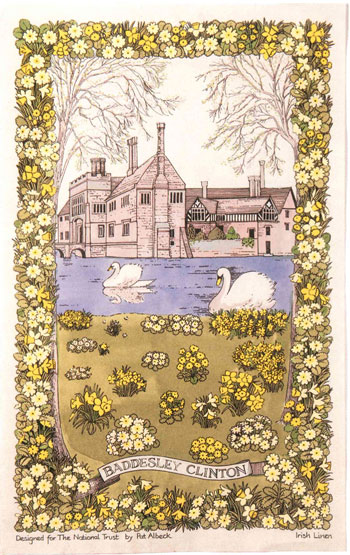
Pat was very pleased with these swans but perhaps the design owes more to the beautifully drawn border of primroses and wild daffodil flowers, of which she was very fond.
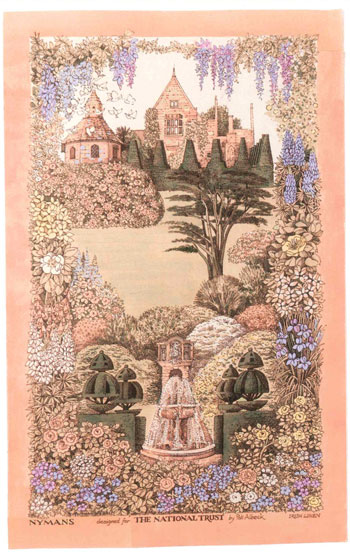
Nymans in West Sussex was twice ruined: once by fire and again in the Great Storm of 1987. Lady Rosse was the last member of the Messel family; who owned the estate, and Pat visited her when staying with her son, Lord Snowdon, nearby. Pat had been a friend of Lady Rosse’s brother, the renowned designer Oliver in the 1950s. She designed this towel following the visit.

